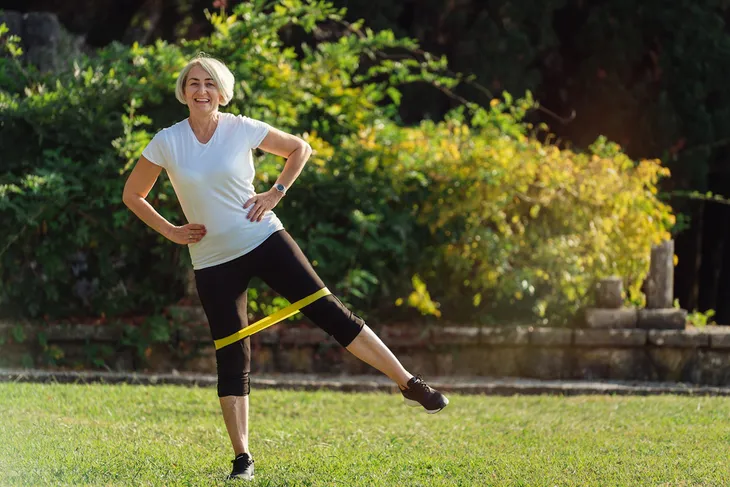Resistance bands are a great tool to use for strength training workouts. After being invented in the early 1900’s for muscle rehabilitation, they have made quite a comeback, steadily gaining in popularity since the 1990’s. Not only are they affordable and convenient, exercises with resistance are often much more effective.
If you’re thinking of investing in some exercise equipment at home, resistance bands are a good place to start. Not only are exercises with resistance more effective, but there are many different options when it comes to level of fitness, plus the exercises are easy to follow and they can be done from the comfort of your own home!
Before we get started with our workout, let’s take some time to learn about resistance bands, including the different kinds of bands and how to choose the right one for you.
Want senior content delivered straight to your inbox? Sign up for our exclusive email list and receive articles and news on diet & nutrition, fitness, and mental health dedicated specifically to our senior audience!
Different Kinds of Resistance Bands
Originally made from surgical tubing, resistance bands come in many forms of rubber, both in latex and non-latex varieties.
- Flat Bands: Flat rubber material cut to specific lengths for exercise and rehab purposes. Can be tied to make a circle band for both upper and lower body moves.
- Tubing: Tube rubber band with handles on either end to hold.
- Looped/Circle Band: Fixed, pre-made circle band. These come in small circles in rubber or cloth covered for comfort, and large which are great for full body and pull-up assistance.
Bands come in a variety of colors which correlates to the resistance they are. Each brand color codes differently, so use each individual guide to determine which is right for you. A good rule of thumb is to get a variety, ranging from light, medium, and heavy.
If you’re new to resistance bands, start with the light and move up from there. It might also depend on the exercise and body part that is being used.
Benefits of Resistance Bands for Seniors
There are many benefits to using resistance bands:
- Portable: Bands are easy to fold up and pack for travel, or easy to put away and out of sight into a drawer when not in use.
- Affordable: Very cost effective and offers many different options when it comes to workouts and movements. Getting a variety pack is much cheaper than multiple sets of weights.
- Full Body: The movements not only use the intended muscle, but a variety to help stabilize the band and the specific area. Natural movements are strengthened when bands are incorporated into a workout regimen.
Why are Resistance Bands More Effective for Seniors?
You might be wondering how resistance bands differ from lifting traditional dumbbells? The answer is simple. When you lift dumbbells, you are going against gravity, but when you’re lowering the weights, gravity assists. Resistance bands offer a much more effective workout because there is resistance in both directions.
In an up-and-down, or out-and-in movement, the band has constant tension that is being used. Also, bands allow for proper execution and form compared to a dumbbell, not allowing the joint to overextend because of the bands natural limit to your range of motion.
The Downside of Resistance Bands
There aren’t many negatives to resistance bands, but the main one would be that an exact number of pounds “lifted” can not be said. Controlling the exact weight resistance is not possible with bands.
Also, adding or taking away exact pounds of weight is not possible. You can use a higher/heavier resistance for a more difficult workout, or even shorten the band being used. On the contrary, use a lighter/less resistance band to do more repetitions. But it’s hard to tell exactly how many pounds (whether it’s 5 or 8-pounds) when it is a resistance of a band that is used.
Resistance Band Workout for Seniors
Resistance bands are a wonderful piece of equipment. They help strengthening and rehab the body, as well as aid in stretching. Try this “Resistance Band Exercises Full Body Workout” that has been specifically crafted for seniors.
In this all seated session we will be incorporating a long band and looped band for upper body, lower body, and abdominal/core strengthening moves. A good warm-up should be done prior to working out, as well as a proper stretch and cool-down after completing the workout.
Remember to do what feels best for you, only doing movements you feel safe and comfortable doing. And drink plenty of water always, especially after completion. Have a great workout!
For more videos by Meredith, check out Senior Fitness with Meredith.







